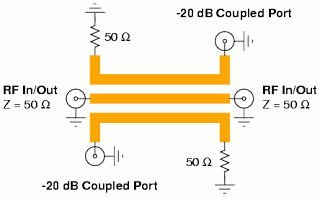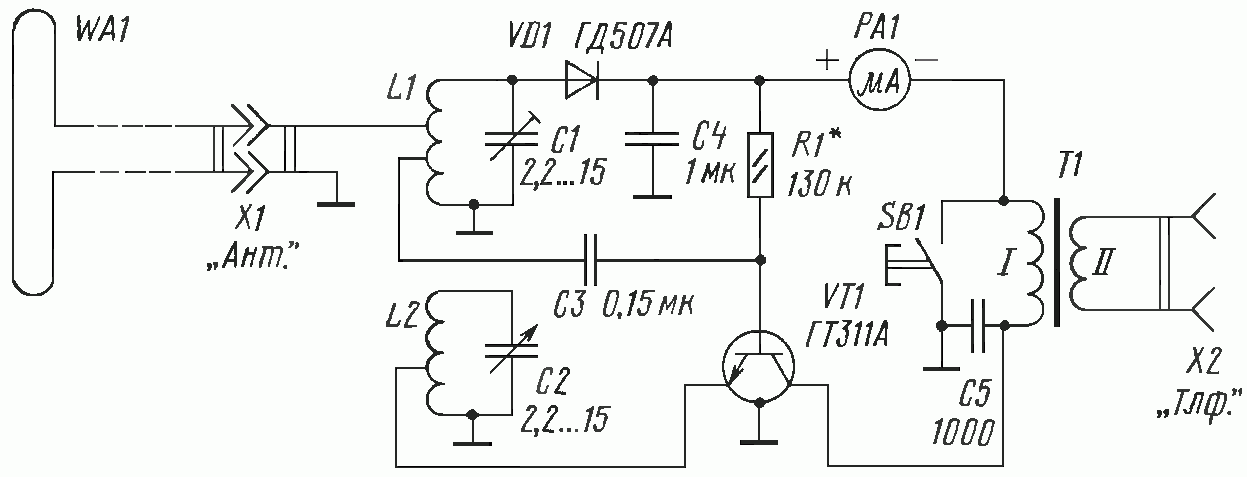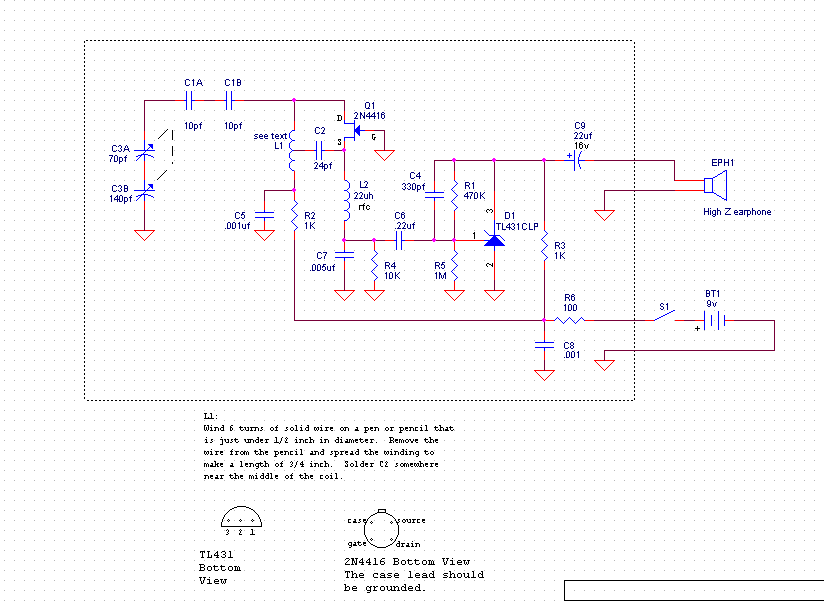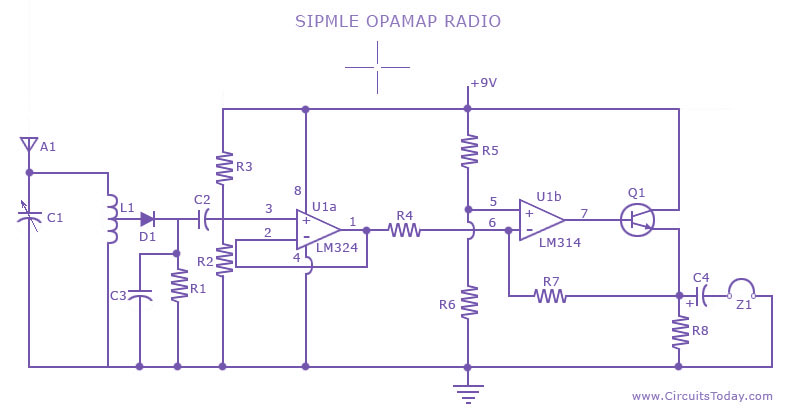
Radio Direction Finder
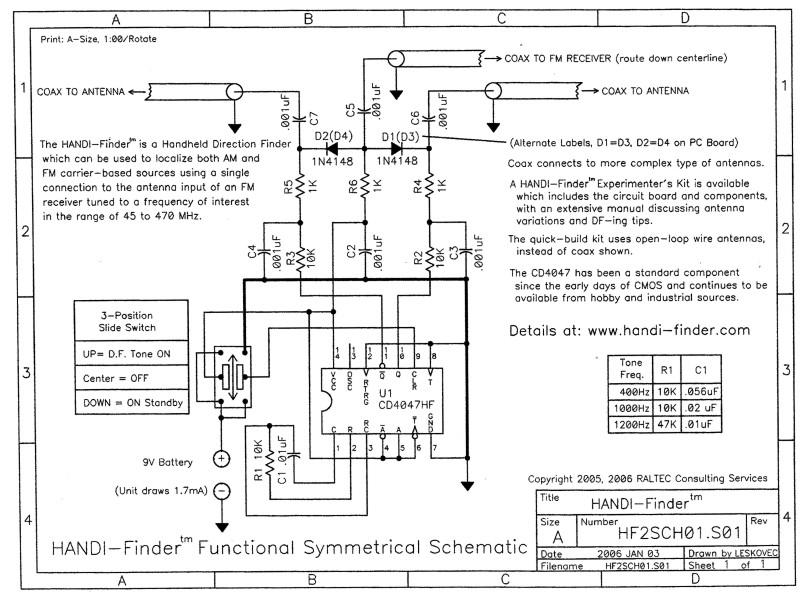
The HANDI-Finder is a handheld direction finder designed to localize both AM and FM carrier-based sources. It operates by connecting to the antenna input of an FM receiver tuned to frequencies between 45 and 450 MHz. This device emphasizes low power consumption, simplicity, and economy. It serves as an easy-to-build kit for beginners and a useful platform for experimentation for more experienced users, making it an excellent project for clubs. The HANDI-Finder provides a quick and cost-effective solution for direction finding, offering a compact tool for locating interference sources. The construction requires minimal fabrication, with two open-loop antennas crafted from coat hanger wire shaped like halves of a "bow-tie" and mounted directly to the circuit board. A coax downlead connects to an FM receiver, allowing it to detect carriers in both AM and FM modes. The device is activated and rotated to find a null in the audio tone, indicating the signal direction, which is perpendicular to the antennas' plane. Although there is a 180-degree ambiguity, it is manageable in practice since multiple bearings are needed to fix a location. The three-position switch allows the user to stop the tone while keeping the antenna active for monitoring or to turn off the unit completely. The manual provides extensive information on construction variations and design concepts. An article titled "Build the HANDI-Finder" was published in QST Magazine in May 1993, containing additional information. All necessary drawings and text for the kit can be printed or downloaded. Parts are readily available from suppliers like Digi-Key and Mouser. This experimental kit starts simply but can become more complex for enhanced performance. It utilizes a Time-Difference-Of-Arrival (TDOA) detection method, which is susceptible to multipath interference. While effective in open areas, performance may degrade in environments with hills, buildings, or dense forests, where using spaced beam antennas can improve effectiveness, albeit at the cost of increased bulk. It is important to note that this device is intended for carrier-based signal sources and cannot localize random noise sources.
The HANDI-Finder is an innovative handheld device that employs a straightforward design to facilitate the localization of AM and FM signals. The operational frequency range, spanning from 45 to 450 MHz, allows for versatile applications in various environments. The device's construction utilizes a minimalistic approach, ensuring that it remains accessible to beginners while still offering avenues for more advanced experimentation.
The dual "bow-tie" antennas, constructed from coat hanger wire, are strategically positioned to optimize signal reception and directionality. This configuration enhances the device's ability to detect both AM and FM signals through a single coaxial connection to an FM receiver. The integration of audio tone feedback serves as a practical means for users to identify the direction of the signal source by rotating the unit until a null is achieved.
The user interface is designed for simplicity, featuring a three-position switch that allows for easy operation. The option to maintain antenna activation while silencing the audio tone is particularly useful for extended monitoring sessions. The device's inherent 180-degree ambiguity is an important consideration in practical applications; however, it is typically mitigated by taking multiple readings to triangulate the position of the signal source.
For those interested in further enhancing the performance of the HANDI-Finder, the manual provides a wealth of information regarding potential modifications and advanced techniques. The TDOA detection method, while effective, does present challenges in environments with significant multipath interference. Users operating in such conditions may benefit from exploring additional configurations, such as spaced beam antennas, to improve detection accuracy.
Overall, the HANDI-Finder represents a valuable tool for hobbyists and professionals alike, offering an affordable and efficient solution for signal localization. Its design encourages experimentation and adaptation, making it a noteworthy project within the field of electronics.The HANDI-Finder ® is a HANdheld DIrection Finder which can be used to localize both AM and FM carrier-based sources using a single connection to the antenna input of an FM receiver tuned to the frequency of interest in the range of 45 to 450 MHz. It has been designed for bare-bone functionality as well as low power consumption, simplicity, and ec
onomy! Because it is both an easy-to-build kit for the beginner and a convenient basis for further experimentation by those with more experience, it makes a great club project! Overall, it is a quick, inexpensive way to implement the concept of direction finding, and provides something relatively compact to keep readily available for locating sources of interference.
Except for adding a handle, fabrication is minimal. Two open-loop antennas are made from coat hanger wire bent into halves of a "bow-tie" shape and mounted directly to the circuit board, as illustrated in the "layout" drawing. The coax downlead is connected to an FM receiver and detects the carrier regardless of whether the transmission mode is AM or FM.
The unit is switched on (UP) and rotated for a null in the audio tone that it adds to the audio coming out the receiver. The signal direction is perpendicular to the plane of the antennas. There is 180-degree ambiguity, but this is not a problem in actual use because multiple "bearings" must be taken anyway in order to establish a "fix" on the location.
Once close in, the operator works toward the general sense of the direction, and again the ambiguity is not a problem. The 3-position switch is moved DOWN to stop the tone but still keeps the antenna activated for monitoring and standby purposes, -or it is moved to the CENTER position to shut off the unit.
Refer to the extensive discussion in the manual which describes construction variations, and the concepts behind the design. "Build the HANDI-Finder" appeared as an article in QST Magazine, May, 1993. All the information in that article and much more is included here! By clicking on the appropriate boxes in this web page, all the drawings and text that come with the kit can be printed out or downloaded from PDF files.
You can copy the layout and build one on perfboard! All parts are available from sources like Digi-Key and Mouser. It should be noted that this is an experimenter`s kit that starts out simple, but can get more complex as one expands on the principle to get better performance. Generically, this is known as a TDOA, Time-Difference-Of-Arrival detector. Time/phase-difference detectors of this sort are susceptable to multipath, which is often overwhelming!
The simple configuration can be quite acceptable on lakes or flat open land. However operation in the vicinity of hills, buildings, or dense forest can be quite problematic due to multipath. Here, a combination of techniques such as using the circuit in combination with two spaced beam antennas can be much more effective, but also much more bulky!
Also note that since this scheme detects a carrier-based signal source, it cannot be used to localize random noise sources! 🔗 External reference
The HANDI-Finder is an innovative handheld device that employs a straightforward design to facilitate the localization of AM and FM signals. The operational frequency range, spanning from 45 to 450 MHz, allows for versatile applications in various environments. The device's construction utilizes a minimalistic approach, ensuring that it remains accessible to beginners while still offering avenues for more advanced experimentation.
The dual "bow-tie" antennas, constructed from coat hanger wire, are strategically positioned to optimize signal reception and directionality. This configuration enhances the device's ability to detect both AM and FM signals through a single coaxial connection to an FM receiver. The integration of audio tone feedback serves as a practical means for users to identify the direction of the signal source by rotating the unit until a null is achieved.
The user interface is designed for simplicity, featuring a three-position switch that allows for easy operation. The option to maintain antenna activation while silencing the audio tone is particularly useful for extended monitoring sessions. The device's inherent 180-degree ambiguity is an important consideration in practical applications; however, it is typically mitigated by taking multiple readings to triangulate the position of the signal source.
For those interested in further enhancing the performance of the HANDI-Finder, the manual provides a wealth of information regarding potential modifications and advanced techniques. The TDOA detection method, while effective, does present challenges in environments with significant multipath interference. Users operating in such conditions may benefit from exploring additional configurations, such as spaced beam antennas, to improve detection accuracy.
Overall, the HANDI-Finder represents a valuable tool for hobbyists and professionals alike, offering an affordable and efficient solution for signal localization. Its design encourages experimentation and adaptation, making it a noteworthy project within the field of electronics.The HANDI-Finder ® is a HANdheld DIrection Finder which can be used to localize both AM and FM carrier-based sources using a single connection to the antenna input of an FM receiver tuned to the frequency of interest in the range of 45 to 450 MHz. It has been designed for bare-bone functionality as well as low power consumption, simplicity, and ec
onomy! Because it is both an easy-to-build kit for the beginner and a convenient basis for further experimentation by those with more experience, it makes a great club project! Overall, it is a quick, inexpensive way to implement the concept of direction finding, and provides something relatively compact to keep readily available for locating sources of interference.
Except for adding a handle, fabrication is minimal. Two open-loop antennas are made from coat hanger wire bent into halves of a "bow-tie" shape and mounted directly to the circuit board, as illustrated in the "layout" drawing. The coax downlead is connected to an FM receiver and detects the carrier regardless of whether the transmission mode is AM or FM.
The unit is switched on (UP) and rotated for a null in the audio tone that it adds to the audio coming out the receiver. The signal direction is perpendicular to the plane of the antennas. There is 180-degree ambiguity, but this is not a problem in actual use because multiple "bearings" must be taken anyway in order to establish a "fix" on the location.
Once close in, the operator works toward the general sense of the direction, and again the ambiguity is not a problem. The 3-position switch is moved DOWN to stop the tone but still keeps the antenna activated for monitoring and standby purposes, -or it is moved to the CENTER position to shut off the unit.
Refer to the extensive discussion in the manual which describes construction variations, and the concepts behind the design. "Build the HANDI-Finder" appeared as an article in QST Magazine, May, 1993. All the information in that article and much more is included here! By clicking on the appropriate boxes in this web page, all the drawings and text that come with the kit can be printed out or downloaded from PDF files.
You can copy the layout and build one on perfboard! All parts are available from sources like Digi-Key and Mouser. It should be noted that this is an experimenter`s kit that starts out simple, but can get more complex as one expands on the principle to get better performance. Generically, this is known as a TDOA, Time-Difference-Of-Arrival detector. Time/phase-difference detectors of this sort are susceptable to multipath, which is often overwhelming!
The simple configuration can be quite acceptable on lakes or flat open land. However operation in the vicinity of hills, buildings, or dense forest can be quite problematic due to multipath. Here, a combination of techniques such as using the circuit in combination with two spaced beam antennas can be much more effective, but also much more bulky!
Also note that since this scheme detects a carrier-based signal source, it cannot be used to localize random noise sources! 🔗 External reference
Warning: include(partials/cookie-banner.php): Failed to open stream: Permission denied in /var/www/html/nextgr/view-circuit.php on line 713
Warning: include(): Failed opening 'partials/cookie-banner.php' for inclusion (include_path='.:/usr/share/php') in /var/www/html/nextgr/view-circuit.php on line 713

